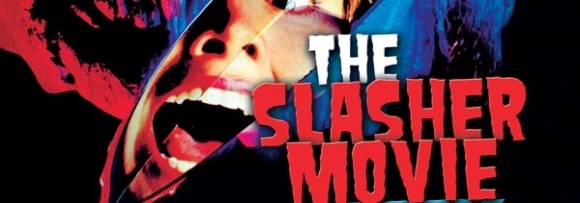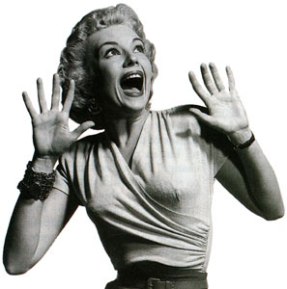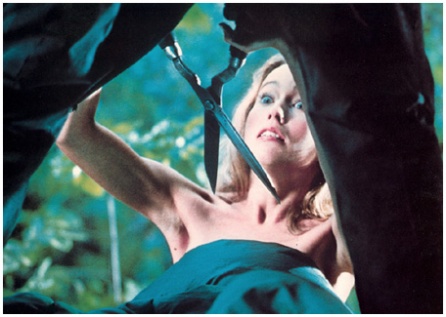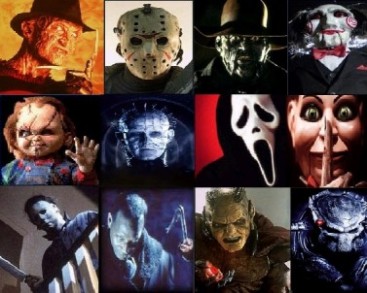Although never as popular as they are today, Slasher films have been around for decades. One can link the slasher genre to as early as the infamous shower scene in Alfred Hitchcock’s “Psycho” in 1960. Slasher films really became known in the seventies when movies like “Halloween” were released. (Leigh, 2012) Since the start of this genre, Slasher films have developed a formulaic foundation filled with stereotypical characters, settings, and plots. Carol Clover reveals these inevitable slasher film elements in Her Body, Himself. She breaks down the formula of slasher films into five concrete categories: the killer, the “terrible place”, the weapon, the victim, and the final girl.
The typical Slasher film always has the crazed killer. Staying true to its formula, the slasher film killer is made up of familiar elements. The killer tends to be male, and is often driven by psychosexual fury and must kill women who excite him sexually. The killer and monsters tend to be misfits and outsiders to society. There is sometimes the killer who is an insider who functions normally until his true self is revealed at the end. Then, there are the true monsters whose sole purpose is to kill and whose role is clear from the beginning. But, no matter which killer is featured in a slasher film, the killer always has certain characteristics. Rarely are the killers ever clearly seen by the viewers or even by the victims in the film. They are usually hidden by the darkness, rain, fog, smoke, or other elements. They are often masked too. The killer tends to be unnaturally large and robust. And lets not forget the most important characteristic of all: the killer’s absolute indestructibility. This indestructibility is key for other elements of the film, and is necessary to pave the way for sequels. In Her Body, Himself, Clover points out that in slasher films, killers are usually the fixed elements while the victims are the elements who are easily changed. (Clover, 1993)
The “terrible place” that Clover talks about in Her Body, Himself, is an important element to slasher films because the terrible place is where the victims often meet their fate. The terrible place, usually some sort of house or tunnel, is creepy not only because of their physically eerie characteristics, but also because of its famous dreadful violent past. Often found in the terrible place is the killer and it’s terrible murderous family. Clover says that typically the terrible place seems to be a place of safety at first but always ends up being the place of destruction in the end. The terrible place is usually the setting for the “penetration scene” where the killer is able to break through the walls that the victims are counting on to keep them safe. During this momentous scene, if the victim has been escaping the killer by simply fleeing, the victim now has no choice but to fight back against the killer. Fleeing is no longer an option once inside the terrible place. (Clover, 1993)
According to Carol Clover, the weapon used in your typical slasher film is almost anything other than a gun. The weapon of a slasher film can’t be something that easily jams or fails, like a firearm. No. It must be something torturous like an ice pick, a pitchfork, a knife, or a hammer. The reason for such torturous weapons, according to clover, is because having a weapon that is a personal extension of the killer’s body brings an animalistic feel to the attack. Another reason for the use of such gore-producing weapons in slasher films is because slasher films tend to have this sort of fascination with flesh. So these weapons allow the use of special effects to let the audience see a human body opened up in the goriest way possible. (Clover, 1993)
The victim is the most interesting, pivotal part of slasher films. I will discuss more about female victims later on in this blog. According to Clover, today’s slasher films involve multiple victims, usually in their teens, mostly female, and are often dressed in extremely revealing, provocative clothing, bordering on nudity. There are now male victims in Slasher films, but most of the victims are females. Many victims in slasher films are killed off due to sexual transgressions. Male victims die short, quickly, and their deaths are usually not as gruesome as the female victims. The female victims usually endure a slow, painful, bloody, naked death. Reasons for the differences of male and female victims portrayed in slasher films will be further discussed in this blog. (Clover, 1993)
Lastly, the final girl is usually composed of a certain string of characteristics. She is usually the character who discovers the mangled bodies of her friends. The final girl is typically the only character able to feel gut instincts, paranoia, and understands the extent of the horror she is about to encounter. She is able to comprehend signs of danger that the other victims ignore. The final girl is usually chased, cornered, injured, and screaming for dear life. She usually faces death on her own and is able to survive long enough to be rescued, or to kill the killer herself. The final girl tends to be more intelligent and less attractive than the other female characters in slasher films.
After reading about these vital elements that make up the stereotypical slasher film formula, I find myself wondering some important questions. Why do slasher films have this formulaic composition? Will this ever change? Why are woman always portrayed so stereotypically in slasher films? Why are female deaths so slow, brutal, and over-sexualized? How to women feel when watching slasher films? Is it possible that a female audience enjoys seeing women portrayed the way they are in slasher films? As an avid horror and slasher film female fan, I’d like to use this blog as an opportunity to discuss my own theories and feelings and answers to these questions.
Sources:
Clover, C. (1993). Her body, himself. In Men, Women, and Chainsaws (1st ed.). Princeton, NJ: Princeton University Press.
Leigh, R. (2012). Slasher movie killers throughout the ages. Retrieved from http://www.squidoo.com/slasher-killers-through-the-ages




